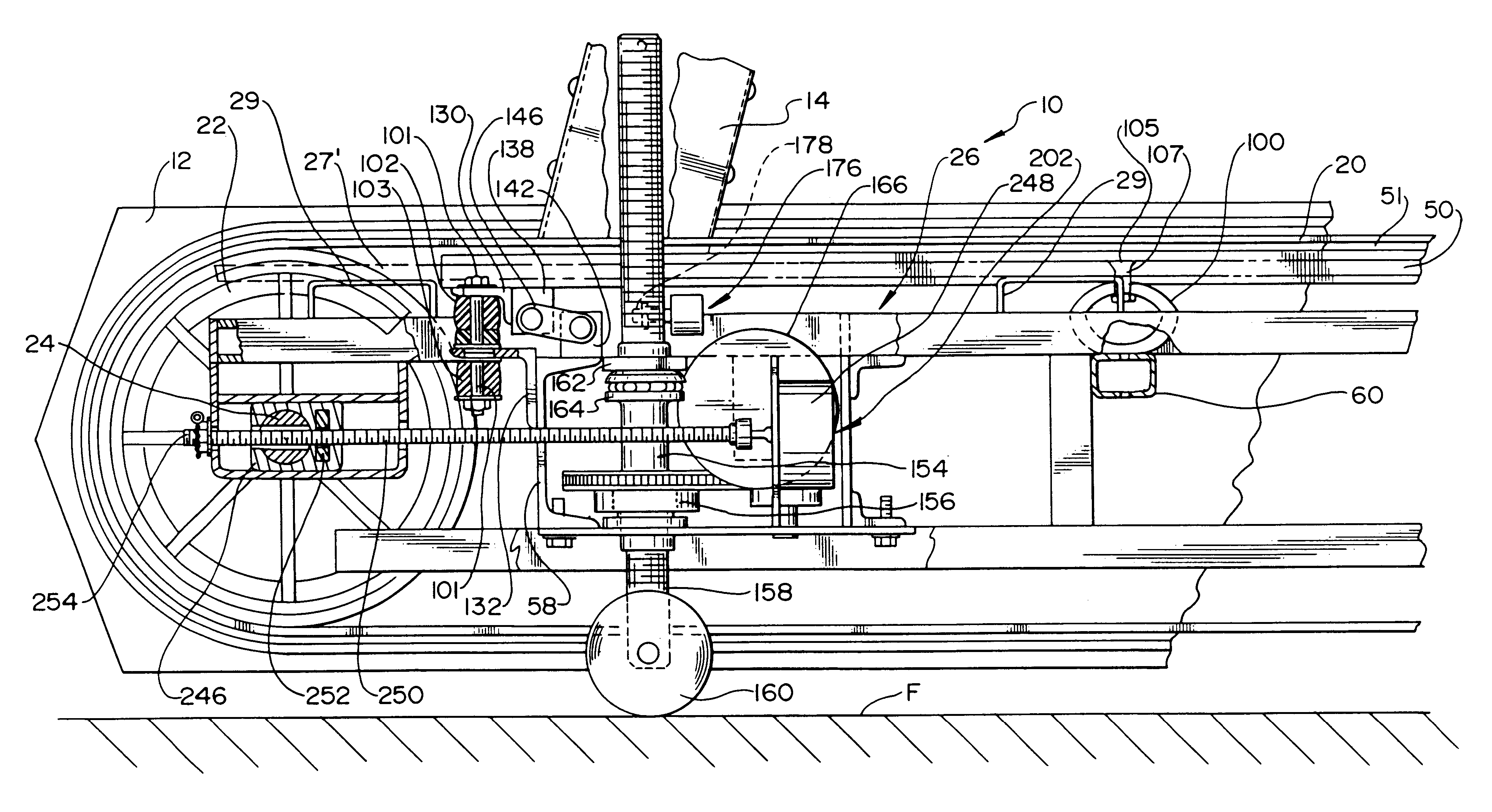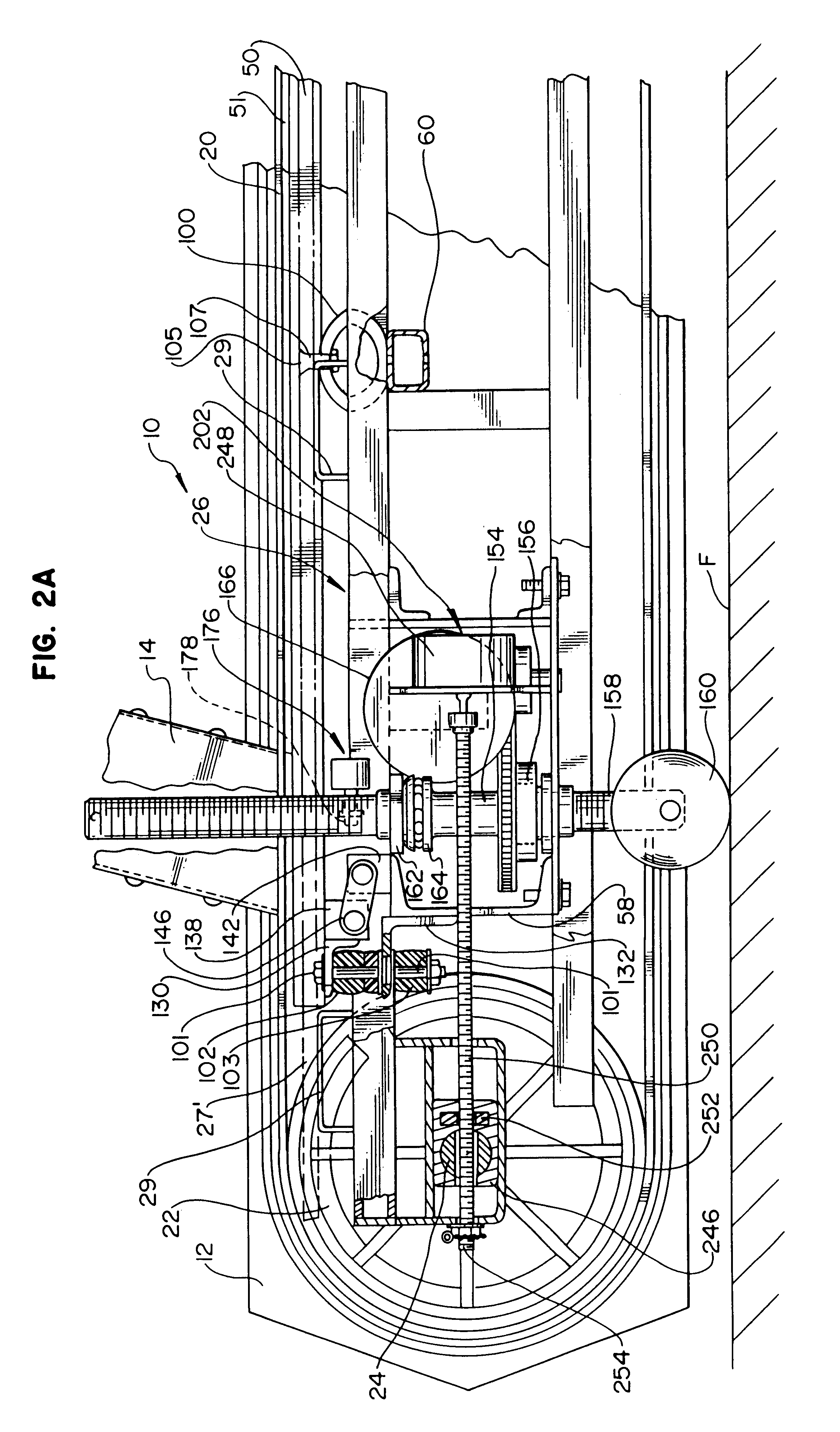Exercise treadmill
- Summary
- Abstract
- Description
- Claims
- Application Information
AI Technical Summary
Benefits of technology
Problems solved by technology
Method used
Image
Examples
Embodiment Construction
[0058]FIG. 1 provides a perspective view of an assembled exercise treadmill 10. The treadmill 10 has a lower frame portions 12 and 12′ housing the internal mechanical components of the treadmill 10, as discussed below. Projecting upwardly from frame 12 and 12′ are a pair of railing posts 14 and 14′. As illustrated in FIG. 1, railing posts 14 and 14′ are slightly tilted from perpendicular relative to lower frame 12 and 12′, primarily for aesthetic purposes. Secured to the tops of railing posts 14 and 14′ are a pair of side rails 16 and 16′. respectively. Side rails 16 and 16′ provide the treadmill user with a means of support either during the entire exercise period or for an initial period until the user has assimilated himself to the speed of the treadmill. Extending between and attached to the side rails 16 and 16′ is a front rail 17 and a control panel 18 mounted on crossmember 19. Front rail 17 provides vet another means of support for the treadmill user. Control panel 18 includ...
PUM
 Login to View More
Login to View More Abstract
Description
Claims
Application Information
 Login to View More
Login to View More - R&D
- Intellectual Property
- Life Sciences
- Materials
- Tech Scout
- Unparalleled Data Quality
- Higher Quality Content
- 60% Fewer Hallucinations
Browse by: Latest US Patents, China's latest patents, Technical Efficacy Thesaurus, Application Domain, Technology Topic, Popular Technical Reports.
© 2025 PatSnap. All rights reserved.Legal|Privacy policy|Modern Slavery Act Transparency Statement|Sitemap|About US| Contact US: help@patsnap.com



